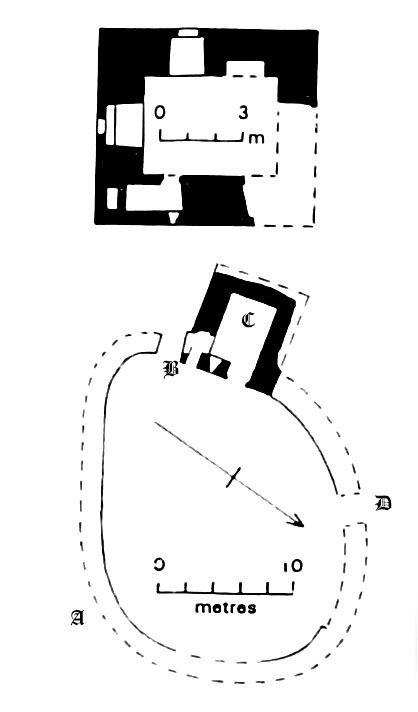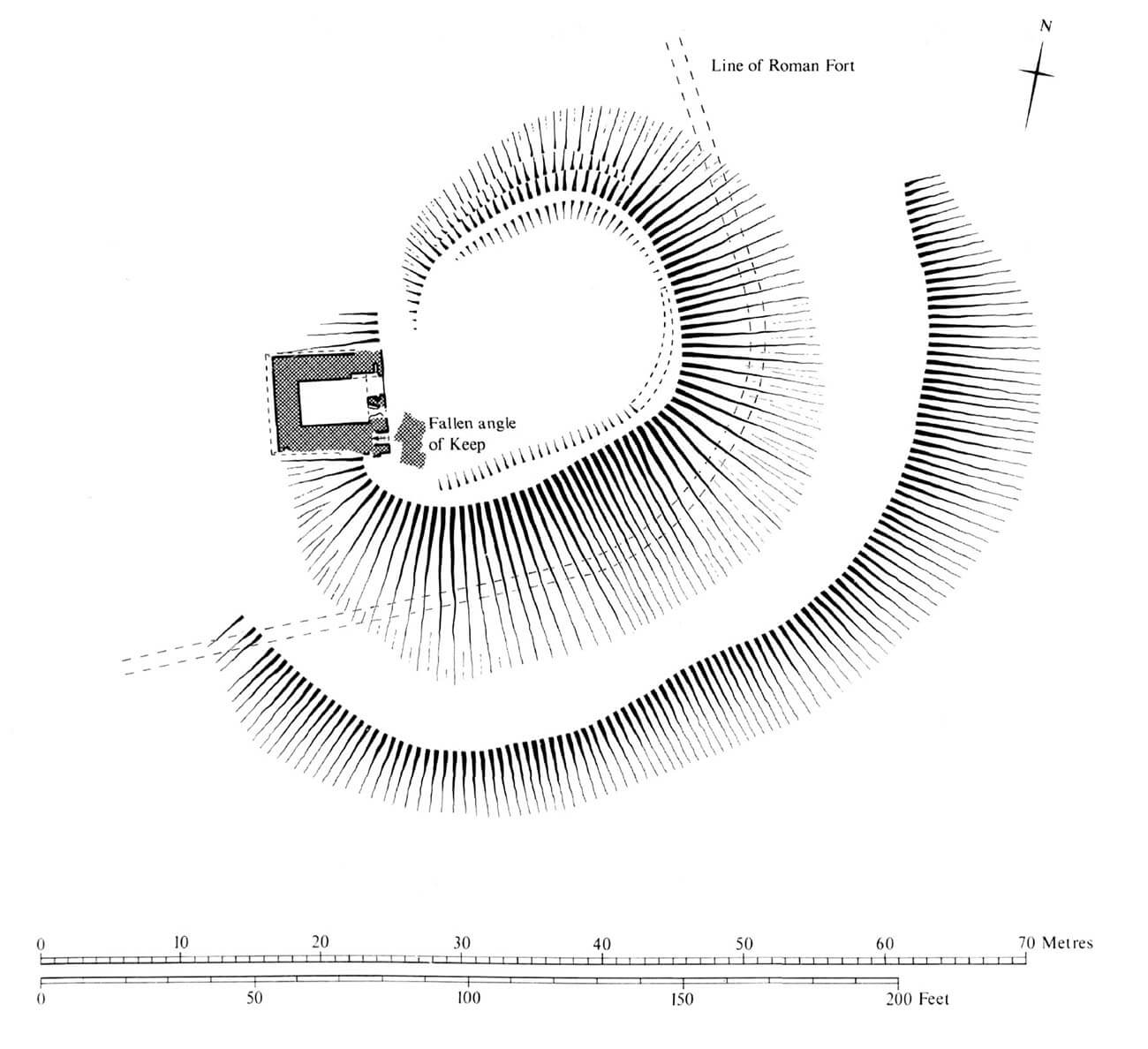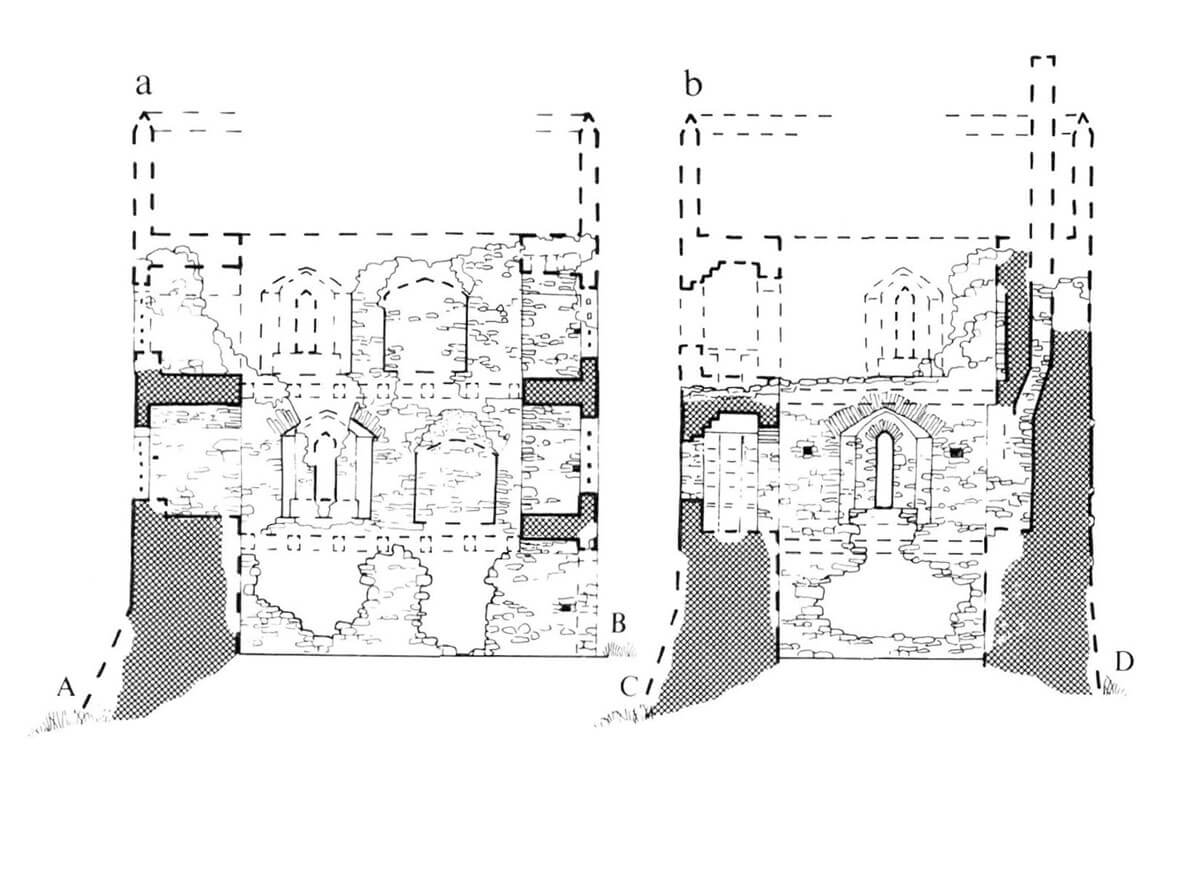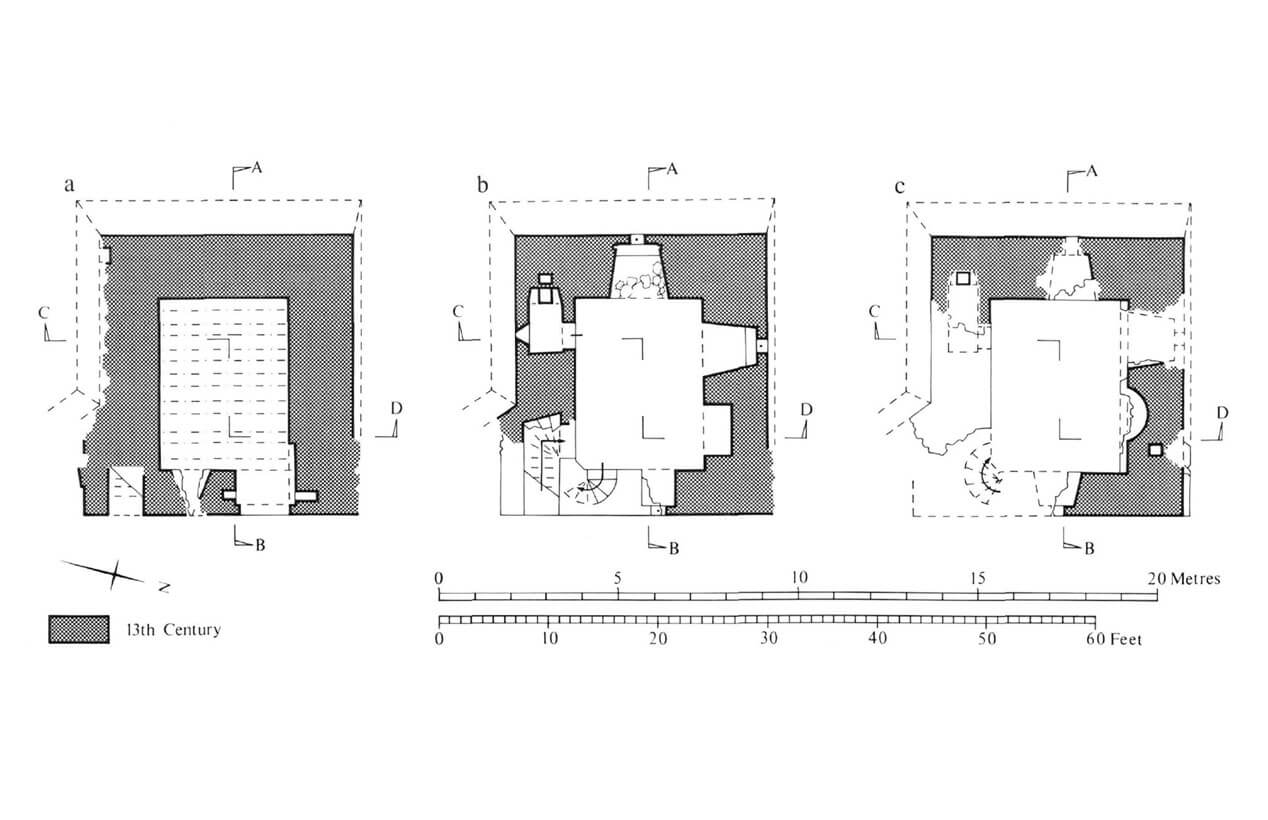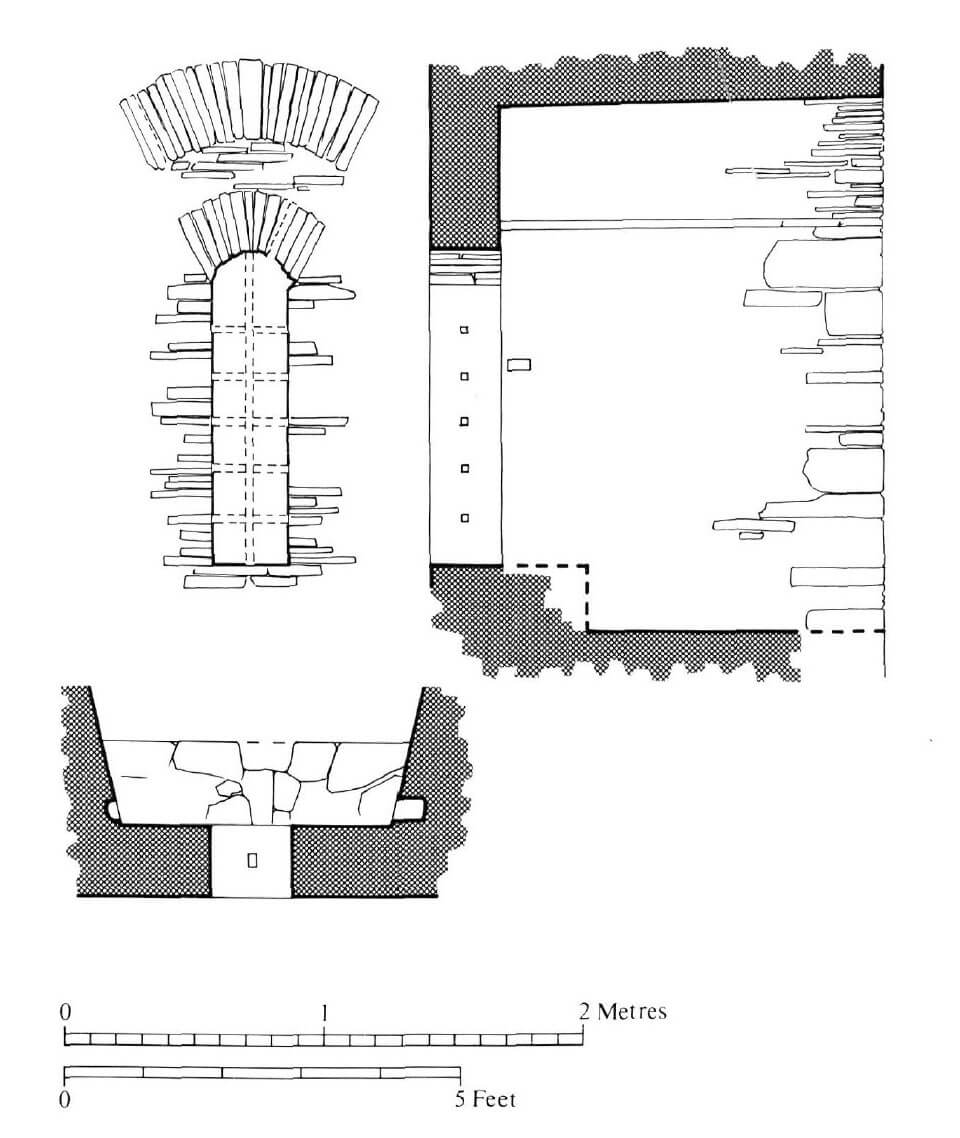History
The conquest of Wales, which started at the end of the 1060s, was led by those knights who came from Normandy together with William the Conqueror. Their progress to the west was determined by the newly built castles. Often they were erected on the sites once occupied by Roman buildings, which brought significant savings of manpower and building materials. So it was the case with the Loughor Castle, which was erected at the beginning of the 12th century on the site of the Roman fort Leucarum, by Henry de Beaumont, the first Earl of Warwick or by his steward, Henry de Villers, who on behalf of the Earl administered the Lordship of Gower (Gywr). The castle was strategically important as it controlled the main road that ran across the peninsula from Henry’s seat in Swansea, protected the crossing of the Llwchwr River, was a valuable port, and secured communication and trade routes.
The first half of the 12th century in South Wales was a period of constant Welsh – Anglo-Norman fights and skirmishes. During them, in 1136 and 1151, Loughor was destroyed as a result of Welsh attacks. When Henry II and the Welsh Prince Rhys ap Gruffydd agreed on peace terms, the castle was rebuilt and fortified, probably by Henry de Neubourg, who owned Loughor from 1151 to 1166. The stronghold was not recorded in documents during the desolation of the Gower Peninsula by Rhys ap Gruffydd in 1189 after the death of Henry II, or during the long siege of nearby Swansea in 1192.
At the end of the 12th century, due to the debts of the Earl of Warwick, Loughor passed into the hands of the Crown and in 1203, along with all of Gower’s lordship, was handed over by King John to the de Braose family. However, as early as 1208, relations between the king and William de Braose deteriorated. William allied with the Welsh Prince Llywelyn the Great, and although he died in 1211, his son, Reginald, continued to fight in alliance with the Welsh rulers. In 1208, King John confiscated Loughor Castle, which in 1215 was captured by Rhys ap Gruffudd’s troops. Gower was then taken by Reginald de Braose, but two years later he made peace with the English king Henry III, and Llywelyn removed him and replaced by the Welsh prince Rhys Gryg. The castle returned to the de Braose family only in 1220, as a result of Llywelyn’s arrangements with Henry III. In the following years, John de Braose, taking advantage of a moment of peace, had time to strengthen the castle with new stone fortifications.
The renewed Welsh – English fights broke out in the middle of the 13th century. It could lead to the desire to strengthen the fortifications of the castle by William de Braose II and to build a keep. William was a powerful magnate in the court of King Edward I, served him in both the Welsh and Scottish wars. He used his influence with the king to win a dispute with the Church, in particular the Bishop of Llandaff, and the improvements made at Loughor Castle at that time may have exposed the status of the de Braose family, despite the fact that its main seat was Oystermouth. The second reason for the erection of the keep could be the Rhys ap Maredudd rebellion of 1287, during which the castles of Swansea and Oystermouth were attacked.
After the Welsh wars of 1276-1277 and 1282-1283, as a result of which Edward I conquered Wales, the significance of Loughor Castle decreased. In 1302, William de Braose granted it for life to his seneschal, John Yweyn, in exchange for an annual fee. After the death of John Yweyn in 1322, Loughor was seized by John de Mowbray, son-in-law of William. John was involved in the rebellion against king Edward II and was executed in 1322, but his daughter, Alice Roculf, successfully appealed to the king and received his lands. Eventually Edward was overthrowned in 1327, and Loughor was awarded to John de Mowbray’s son, John. At the end of the fourteenth century, the castle was already ruined. It did not play any role during the Welsh rebellion of Owain Glyndŵr in the early 15th century or during the 17th century English Civil War.
Architecture
The castle from the 12th century was protected from the south by a steep slope, towering about 20-25 meters above the marshy area stretching along the meandering Afon Lliw River, which flows south-west into the wide bed of the Loughor River (Llwchwr). The Loughor River near the castle had a narrowing and ford connecting the Glamorgan lands to the Gower Peninsula. To the west, its waters flowed into Caerfyrddin Bay.
In the 12th century, the castle was a timber defensive circuit (ringwork), situated on a hill with dimensions of about 29 by 23 meters, 12 meters high, protected by a 5 meter wide and 2 meter deep ditch. Access was probably defended by some form of an early stone or stone and timber tower in the western part of the complex, flanking the gate on its north-eastern side. In addition to the wooden kitchen measuring 4 x 4 meters, it is not known what exactly the buildings were initially inside the small perimeter of the fortifications, but it could not be too extensive due to the lack of more space. Perhaps for this reason, in front of the ditch, on the west side, near the parish church, there was an outer bailey. The kitchen was connected by a cobbled path with a circular oven at the edge of the courtyard. In the second half of the 12th century, two wooden buildings were built inside the fortifications, located in the northern and eastern parts, with the northern one having dimensions of about 8 x 3 meters. At the same time, throughout this century, the fortifications were expanded and the inner side of the fortifications was filled with stones and earth, which eventually led to the transformation of the perimeter of the fortifications (ringwork) into a mound (motte). At the end of the 12th century, the first two stone buildings with rounded corners were built. One of them was 8 x 4.5 meters and required the destruction of an older timber building, the other was 5 meters long.
After 1220, a roughly oval perimeter of stone defensive walls was erected, about 1.6 meters thick and 7.5 meters high (to the level of the wall-walk), separating a courtyard about 25 x 19 meters. The internal buildings were then limited to two small, stone buildings situated on the site of older wooden structures. After 1251, on the site of the original west tower, a stone, square tower-keep was built, protruding in front of the perimeter of the wall towards the ditch (which had to be leveled at this point). The gate to the castle was in the wall south of the keep.
The keep had dimensions of 7.2 x 8 meters, a basement-ground floor and a chambers with a fireplace and a latrine on the first and second floors. The entrance to the basement was from the east at the courtyard level (it was closed with a bat), and another led through a spiral staircase set in the south-eastern corner, straight to the first and second floors. Probably the entrance to the ground floor was pierced a little later, and originally the chamber at the very bottom, serving only as a pantry, was accessible through an opening in the ceiling. The storeys were separated by wooden ceilings with beams embedded in sockets in the wall. The ground floor was illuminated by only one slit opening, and the upper floors had two lancet windows: from the north and west, and one from the east, from the courtyard side. Those directed outside the castle were secured with an iron grilles and wooden shutters. The layout of the chambers on the two upper floors was identical (fireplaces in the north, latrines in the south), except for the portal on the first floor leading to the wall-walk at the crown of the perimeter wall and the location of the eastern window on the second floor, which blocked the place to the upper part of the staircase. If any stairs led to a defensive gallery crowning the tower, it had to be placed elsewhere (probably in the destroyed southern wall). In general, the living conditions in the tower were modest, and the rooms were cramped and devoid of architectural details.
Current state
Currently, the only visible remain of the castle is the earth mound and the ruin of the keep tower located on its edge. Its walls have survived to the height of the third storey, but in the 1940s its south-eastern corner collapsed and fell to the ground intact. It was decided to leave it in place. The castle is open to the public for free.
bibliography:
Kenyon J., The medieval castles of Wales, Cardiff 2010.
Salter M., The castles of Gwent, Glamorgan & Gower, Malvern 2002.
The Royal Commission on Ancient and Historical Monuments of Wales, Glamorgan Early Castles, London 1991.
Williams D., Gower. A Guide to Ancient and Historic Monuments of the Gower Peninsula, Cardiff 1998.

